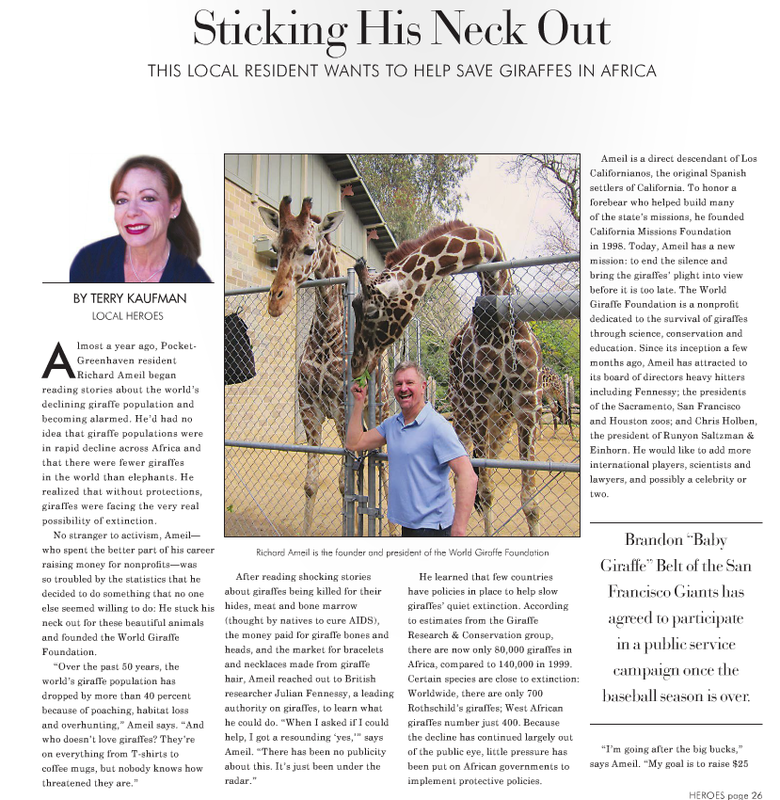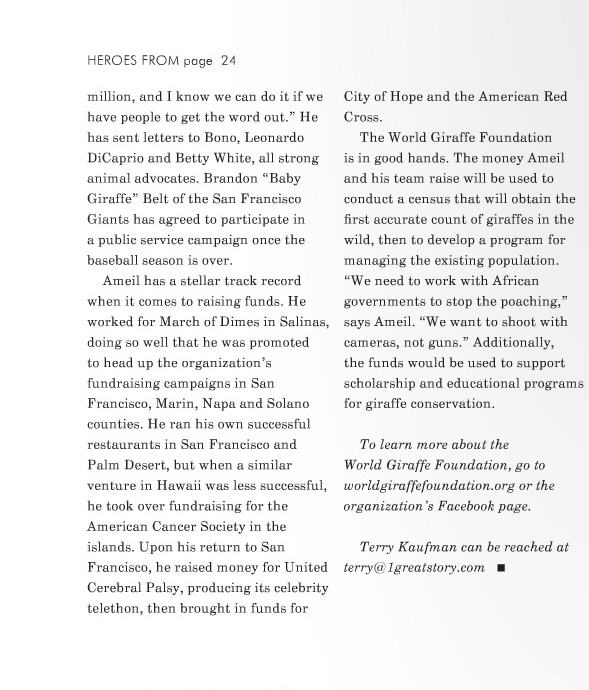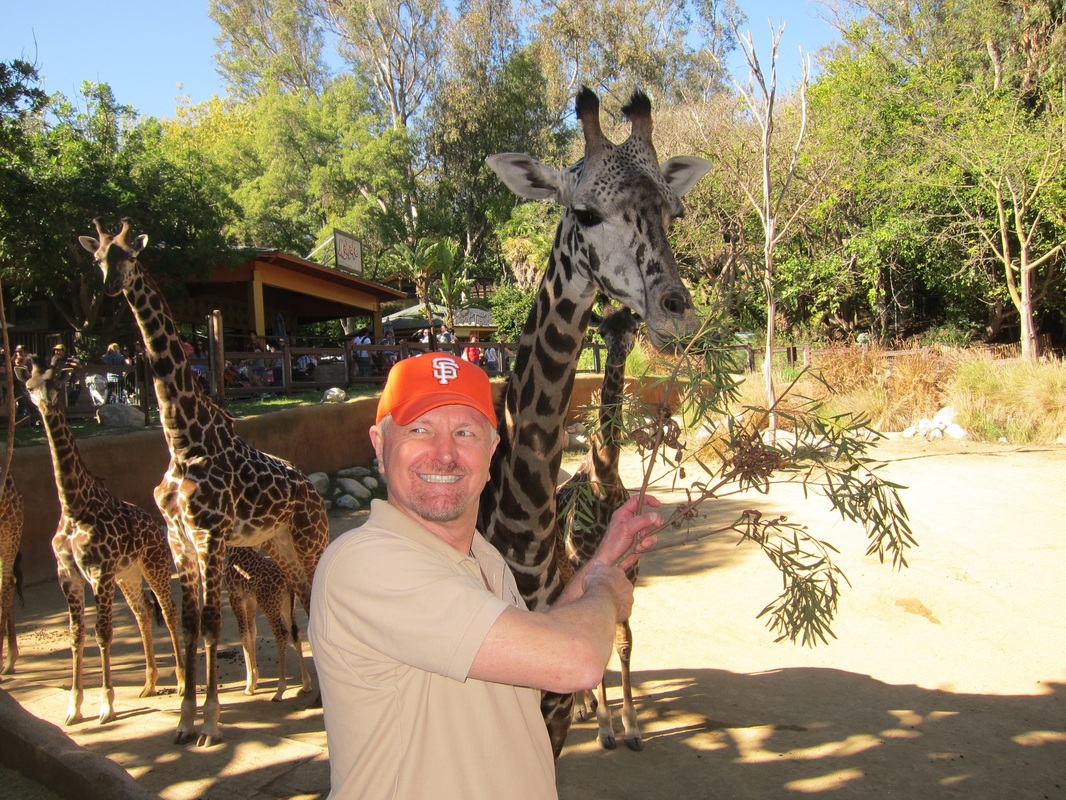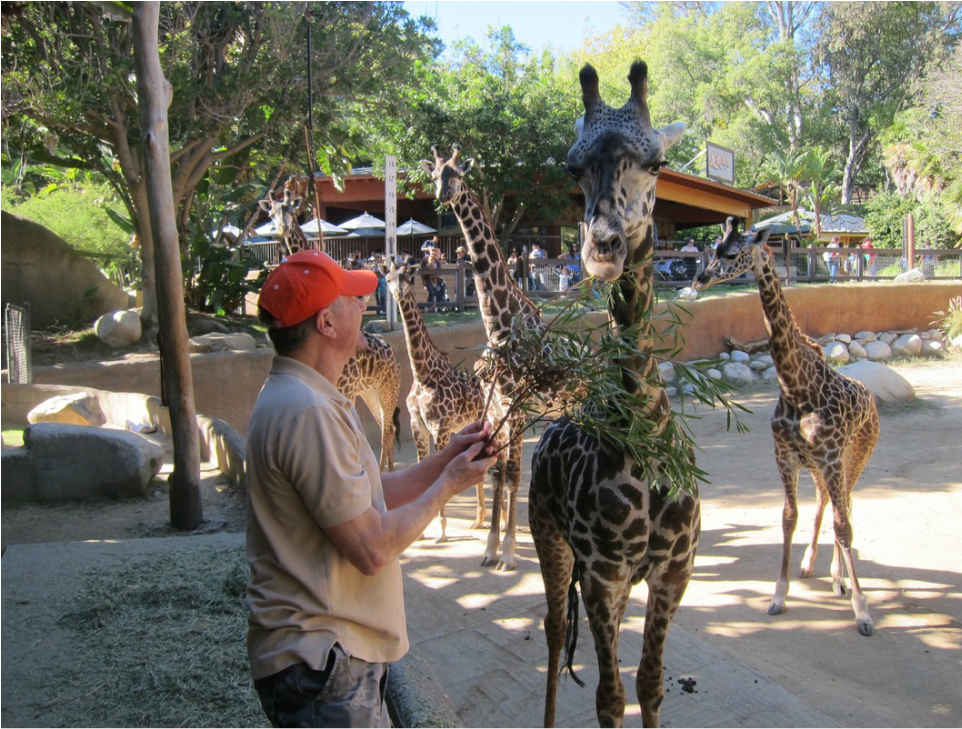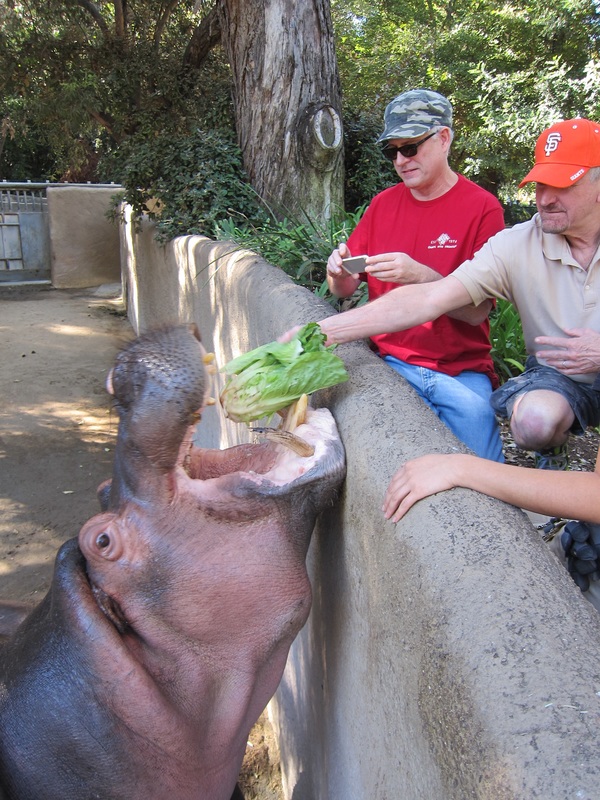GIRAFFES OFFICIALLY ADDED TO 'CRITICALLY ENDANGERED' SPECIES LIST
Two subspecies of giraffe have been added to the list of critically endangered animals, and environmental experts have warned that the dwindling population of these is animals almost entirely due to human behavior in their habitats.
The two subspecies in question, the Kordofan and Nubian, have been added to the danger critically endangered list after a persistent drop off in their numbers in the wild areas of Eritrea, Guinea, Burkina Faso, Nigeria, Malawi, Mauritania and Senegal where the animals are native. A new report from the International Union for Conservation of Nature (IUCN) has indicated that there has been a considerable drop off over the past three decades with numbers of these two subspecies decreasing by 40%.
There are nine subspecies of giraffes, all of which have seen a significant decrease in numbers over the past half a century as a result of poaching, agriculture, mining and construction in their native habitats. While the giraffe has been protected to a certain extent in southern Africa, all subspecies are under extreme threat in East, Central, and West Africa.
The public tend to respond with shock when they realize how close giraffes are coming to extinction as they are so often seen on safari, in the media, and zoos but he claims that environmental activists and conversation experts have been warning that the creature is being seriously threatened for quite some time.
One of the reasons why the general public is unaware of the danger posing the world’s giraffe population is that there is limited awareness of how vulnerable these gentle creatures are to poaching. Poaching is mainly associated with animals such as elephants and rhinos that are hunted for their valuable ivory tusks and horns. However, giraffes also draw the attention of poachers working on the black market who seek out the animals for their heads and their bones. According to the Rothchild’s Giraffe Project, these items can be sold illegally for up to $140 each.
Across Africa, particularly in the southern countries, there has been a persistent and largely successful effort over the past few decades to eradicate poaching and protect the diverse and majestic animal population. It is hoped that this effort will be replicated across the other regions of Africa to ensure that giraffes and other animals can still survive in the wild in the 21st century.
Two subspecies of giraffe have been added to the list of critically endangered animals, and environmental experts have warned that the dwindling population of these is animals almost entirely due to human behavior in their habitats.
The two subspecies in question, the Kordofan and Nubian, have been added to the danger critically endangered list after a persistent drop off in their numbers in the wild areas of Eritrea, Guinea, Burkina Faso, Nigeria, Malawi, Mauritania and Senegal where the animals are native. A new report from the International Union for Conservation of Nature (IUCN) has indicated that there has been a considerable drop off over the past three decades with numbers of these two subspecies decreasing by 40%.
There are nine subspecies of giraffes, all of which have seen a significant decrease in numbers over the past half a century as a result of poaching, agriculture, mining and construction in their native habitats. While the giraffe has been protected to a certain extent in southern Africa, all subspecies are under extreme threat in East, Central, and West Africa.
The public tend to respond with shock when they realize how close giraffes are coming to extinction as they are so often seen on safari, in the media, and zoos but he claims that environmental activists and conversation experts have been warning that the creature is being seriously threatened for quite some time.
One of the reasons why the general public is unaware of the danger posing the world’s giraffe population is that there is limited awareness of how vulnerable these gentle creatures are to poaching. Poaching is mainly associated with animals such as elephants and rhinos that are hunted for their valuable ivory tusks and horns. However, giraffes also draw the attention of poachers working on the black market who seek out the animals for their heads and their bones. According to the Rothchild’s Giraffe Project, these items can be sold illegally for up to $140 each.
Across Africa, particularly in the southern countries, there has been a persistent and largely successful effort over the past few decades to eradicate poaching and protect the diverse and majestic animal population. It is hoped that this effort will be replicated across the other regions of Africa to ensure that giraffes and other animals can still survive in the wild in the 21st century.
GIRAFFES ARE AT RISK OF EXTINCTION
Giraffes are at risk of extinction with some subspecies now listed as ‘critically endangered’ for the first time.
The latest International Union for Conservation of Nature (IUCN) Red List of Threatened Species has placed the Cordovan and Nubian giraffes just one stage from extinct in the wild, with fewer than 4,650 animals left.
The Reticulated, Thornicroft’s, and West African giraffes and are also listed as endangered or vulnerable. And although Masai giraffes are yet to be assessed, numbers have plummeted in recent years and conservationists expect they will soon be added to the red list.
Only the Angolan giraffe – which lives in Botswana, Namibia and Zimbabwe is out of danger, and listed as of least concern although numbers of Rothschild’s giraffe are improving after intensive conservation work, and are now listed as near threatened.
Rothschild's Giraffe have improved in recent years
Just 15 years ago there were thought to be around 150,000 giraffes in the wild but since then numbers have slumped by 40 per cent because of habitat loss and poaching.
The IUCN Red List now includes 96,951 species of which 26,840 are threatened with extinction.
Giraffes are at risk of extinction with some subspecies now listed as ‘critically endangered’ for the first time.
The latest International Union for Conservation of Nature (IUCN) Red List of Threatened Species has placed the Cordovan and Nubian giraffes just one stage from extinct in the wild, with fewer than 4,650 animals left.
The Reticulated, Thornicroft’s, and West African giraffes and are also listed as endangered or vulnerable. And although Masai giraffes are yet to be assessed, numbers have plummeted in recent years and conservationists expect they will soon be added to the red list.
Only the Angolan giraffe – which lives in Botswana, Namibia and Zimbabwe is out of danger, and listed as of least concern although numbers of Rothschild’s giraffe are improving after intensive conservation work, and are now listed as near threatened.
Rothschild's Giraffe have improved in recent years
Just 15 years ago there were thought to be around 150,000 giraffes in the wild but since then numbers have slumped by 40 per cent because of habitat loss and poaching.
The IUCN Red List now includes 96,951 species of which 26,840 are threatened with extinction.
World Giraffe President, Rick Ameil, discussing the foundation and giraffe conservation on Capital Public Radio on October 12, 2015.
